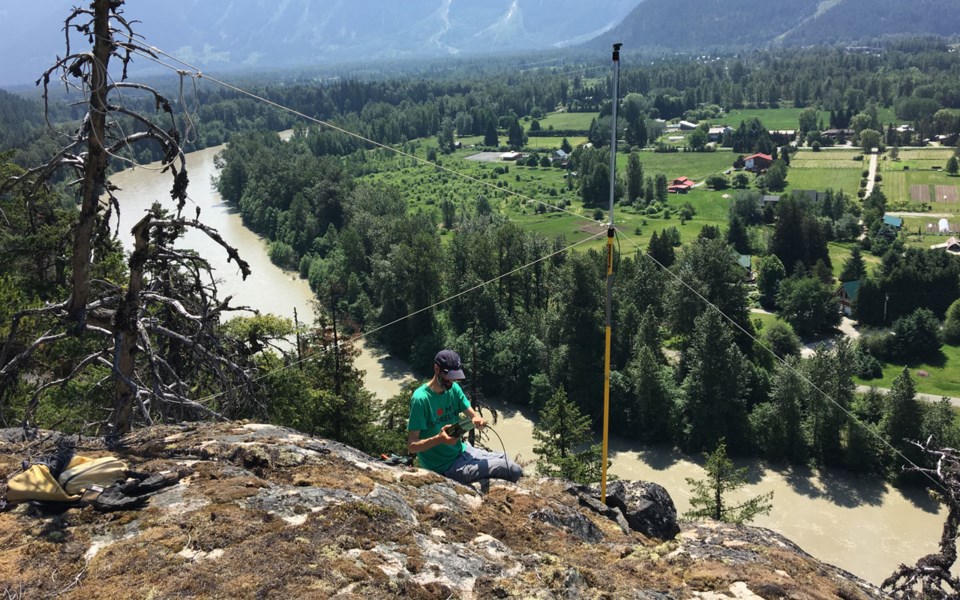The future is looking a little better for bats in Pemberton after a study into local populations last summer.
Project coordinator Greg Ferguson undertook the study, connecting with the Pemberton Wildlife Association (PWA) and Stewardship Pemberton for their local knowledge.
While there was some scattered local information about bat populations, Ferguson said the study helped formalize it alongside surveys across the province.
“There wasn’t much known about what species were there or where they were,” he explained.
The project undertook several initiatives to identify bats: completing roost counts through B.C. Community Bat Program’s annual count; analyzing bridges and culverts; taking station surveys as well as transect surveys; and collecting guano samples.
In all, the study looked at six roosts on five private properties, completed acoustic surveys at four stations, and analyzed 46 bridges and two culverts.
“It’s important to collect that information to make people aware of where those are and what measures they can take to conserve them,” Ferguson said.
All told, nine species of bat were confirmed, including the little brown myotis, which is considered endangered federally.
“There was a fairly substantial number of species found, which wasn’t unexpected because the habitat in the Pemberton area, at least in the valley, is quite diverse, is fairly intact and has some good attributes,” said Ferguson, citing the area’s trees, cliffs and bodies of water.
In addition to being useful on a provincial level, Ferguson also passed along data to the North American Bat Monitoring Program, which is monitoring the spread of white-nose syndrome, a deadly fungal disease that has been found in Washington state but hasn’t currently been detected in B.C.
Ferguson hopes his work will inspire both the Village of Pemberton and Lil’wat Nation to pursue Bat Friendly Community designations.
“They have a place where they can find more resources or do more activities,” he said of the governments.
PWA president Allen McEwan said work continued this summer, as the organization placed detection equipment at four stations identified in Ferguson’s project to collect more data.
“We had to hike up into the mountains and put these little bat detectors up, so it was interesting work and some of them, I understand, were very productive,” said McEwan, adding that a donor provided seven bat boxes that were distributed within the community. One of those was given to a homeowner that had bats in their house, and was willing to install a bat box onsite.
“We don’t want people to eradicate a colony of bats if they’ve moved into their attic or something,” McEwan said. “We do everything we can to help a homeowner out and move those bats to a safe location.”
When more data becomes available, McEwan said, the PWA will take a closer look to see if more action needs to be taken.
B.C. Community Bat Project provincial coordinator Mandy Kellner said the organization is still receiving and processing this year’s data.
“The data is important for monitoring and looking at impacts to bats and bat populations,” she said. “There’s white-nose creeping up from Washington and then there are all the other things they’re dealing with like changing insect populations, climate change, forestry and habitat loss, development and loss of wetlands.”
Kellner said the data, in particular, will help change approaches to conservation so that bats’ needs are considered as well.
“That has a huge potential to change how we manage bats,” she said. “It’s not something that’s on people’s radars and we don’t think about them in planning.”
With Ferguson having moved on from Pemberton, there’s an opportunity for another coordinator to step in. While the program, Kellner said, could provide some funding, anyone taking on the role would need to search for additional sources as well.
“It takes a keen local person,” she said.




